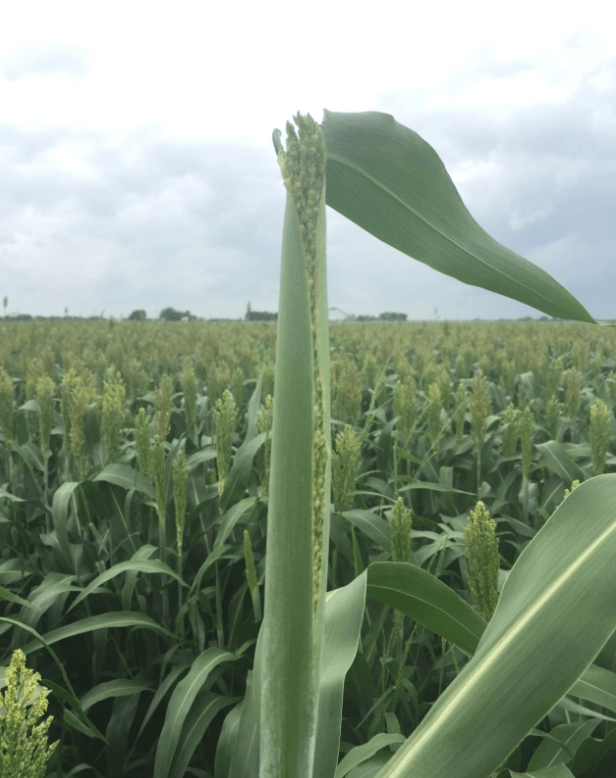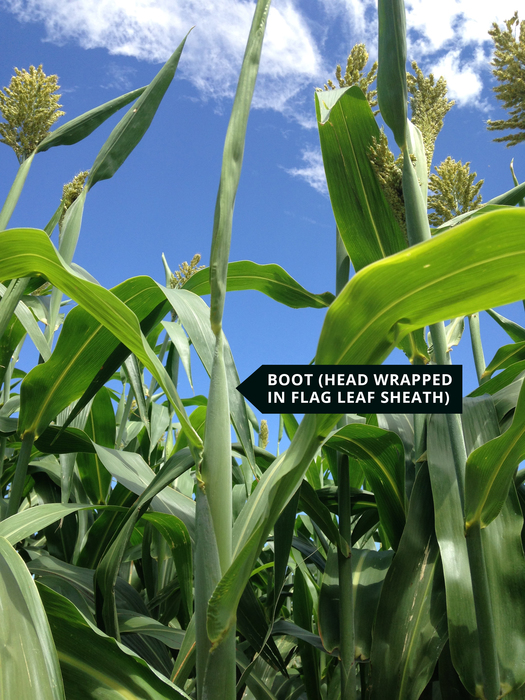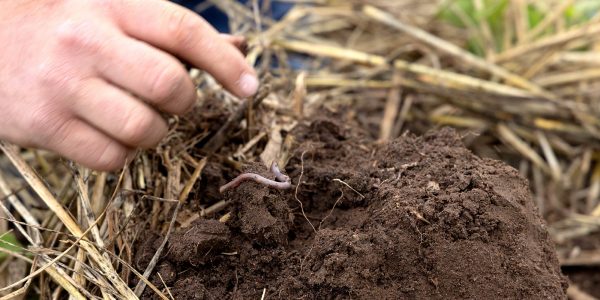
Growth and Development
Recognizing the key developmental stages of sorghum can aid in making critical management decisions. The stages are based on sorghum structures as they develop over the life of the plant. A sorghum plant has 10 official stages of growth and development, starting with emergence – Stage 0 – and ending with the physiological maturity of the grain, Stage 9.
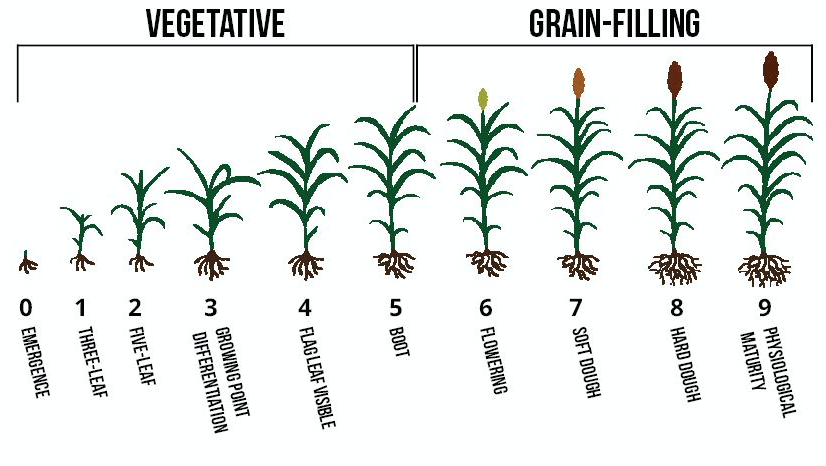
During the vegetative stage of the sorghum plant, the number of leaves is often used to determine the stage of the plant. Grain sorghum leaves are numbered by counting the fully expanded leaves that have a developed collar. When counting leaves, keep in mind that the first leaf is short with a rounded tip and leaves alternate from one side of the stalk to the other. Once sorghum has produced approximately five fully expanded leaves, counting can become difficult because lower leaves will die and fall off the plant. For instance, the first leaf likely will fall off the plant within 25 days of emergence.
The following are descriptions and photos of each growth stage along with timely management suggestions.
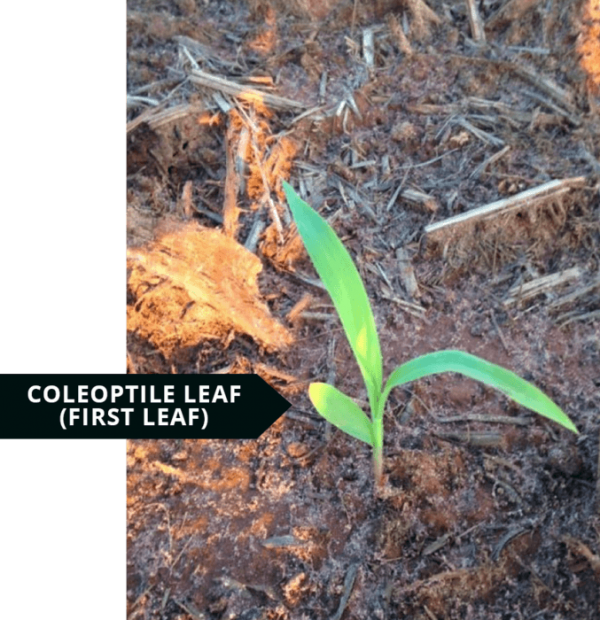
Stage 0: Emergence
The plant is visible when the first leaf, known as the coleoptile leaf, breaks through the soil surface. The coleoptile leaf is shorter than the later emerging leaves and has a rounded leaf tip. Emergence time can range from three to 14 days, depending largely on soil temperature, moisture, seeding depth and seedling vigor.

Stage 1: Three-Leaf
The collar of the third leaf is visible. Note that once a leaf’s collar forms, the leaf no longer expands. This stage occurs 10 to 15 days after emergence, depending on weather conditions, when the plant is typically 3 to 4 inches tall.

Stage 2: Five-Leaf
The collar of the fifth fully expanded leaf is visible, and the growing point is at or just below the soil surface. This stage occurs approximately 20 to 25 days after emergence when the plant is 7 to 9 inches tall. Farmers should apply most post-emergent herbicides at or before this time. Sidedress fertilizer applications are best made at this stage or within the following 10 to 15 days.

Stage 3: Growing Point Differentiation (GPD)
The plant is entering a rapid period of growth. The growing point can be found just above the ground by splitting the stalk, and the number of seeds per head will be determined over the next couple of weeks. This stage typically occurs 30 to 40 days after emergence, when the plant is 12 to 15 inches tall.
At this stage, one or two of the bottom leaves may have fallen off, and tillers may be present at the base of the plant. Prior to GPD, the plant can withstand considerable stress with minimum effect on yield. However, stress during GPD can affect the potential number of seeds per head at flowering. Stage 3 is a key time to apply irrigation if soil moisture conditions are dry and irrigation is available.
Photo Source: C. Trostle, Texas AgriLife

Stage 4: Flag Leaf Visible
The last leaf to emerge prior to heading is called the flag leaf, which is shorter than the preceding leaves. The sorghum plant is in the flag leaf stage when the leaf tip is visible in the whorl. The last two or three leaves will fully expand during this period. Typically, the plant progresses from the flag leaf to the boot stage in 5 to 7 days.
Stage 5: Boot
The boot stage is when the sorghum panicle, also known as the head, is in the flag leaf sheath and can be seen as a bulge or swelling. Leaf collars of all leaves are visible, and the panicle is pushed up through the flag leaf collar by the upper stalk, known as the peduncle. The length of the peduncle can be affected by stress at this time and is influenced by hybrid genetics. With most grain sorghum hybrids, the boot stage occurs approximately 50 to 60 days after emergence. Moisture and heat stress during the boot stage and for the next 14 days will significantly lower yield. The plant progresses from the boot stage to the heading stage in 3 to 5 days.

Heading (Not An Official Stage)
Heading occurs when the panicle becomes visible as it emerges from the flag leaf sheath. Sorghum is considered “headed” when 50% of the panicles in a field are visible. The plant can progress from heading to mid-bloom very quickly. In fact, some hybrids begin blooming as soon as the panicle has completely emerged from the leaf sheath.
Stage 6: Flowering
Flowering or blooming is the most critical stage in the life of the sorghum plant. A plant begins flowering from the top of the panicle and progresses downward. A field of sorghum is in the flowering stage when blooming has progressed halfway down the panicle in 50% of the plants. At this stage, the peduncle is still elongating, and it typically takes 4 to 9 days for a single panicle to complete the flowering process. Hybrids are rated on their maturity largely based on the length of time the plant takes to reach the flowering stage.
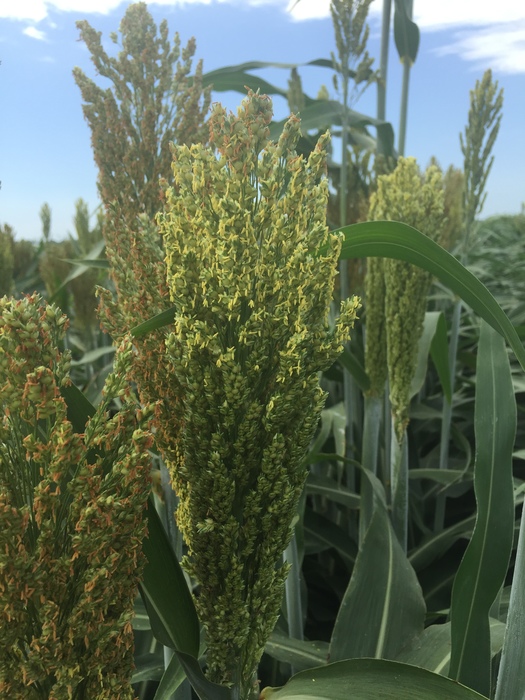

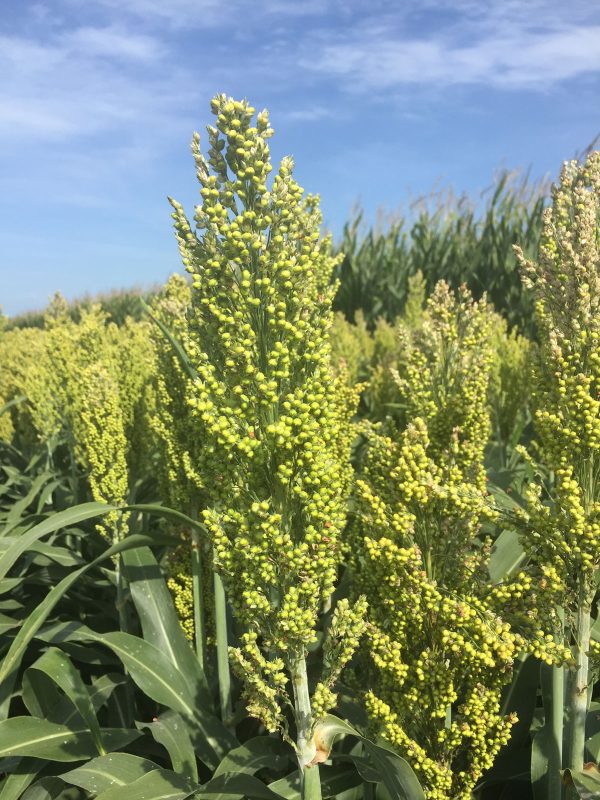
Milk (Not An Official Stage)
Grain begins forming as soon as flowering and pollination are complete. The grain or kernel quickly expands and contains a milky fluid. At this point, the sorghum is in the grain fill period that will not be completed until physiological maturity is reached. The milk stage usually lasts 7 to 10 days.

Stage 7: Soft Dough
Sorghum reaches the soft dough stage when the grain can be crushed between the thumb and index finger but no longer contains a milky liquid. At this stage, starch is rapidly accumulating, 50% of the grain’s final weight has been achieved, and the whole plant moisture is approximately 65-68%. Stress at this time can significantly lower yield. By the end of the stage, the grain has colored, and the sorghum is ready to harvest as silage. The soft dough stage will last 7 to 10 days or until the grain can no longer be crushed between the thumb and index finger.
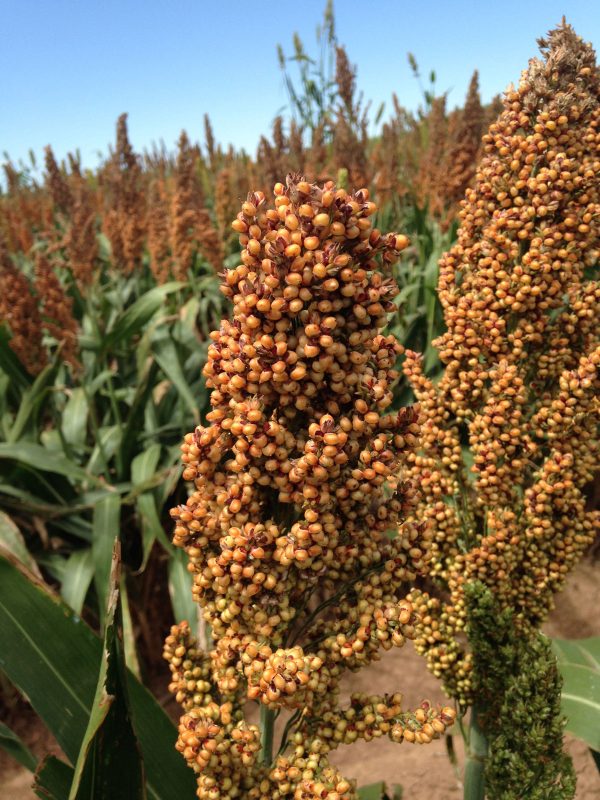
Stage 8: HARD DOUGH
At the hard dough stage, grain has reached 75 percent of its final dry weight, and nutrient uptake is almost complete. The grain can no longer be crushed between the thumb and index finger. The seed coat is no longer green and has turned its final color, which can be white, tan, bronze or red. The total moisture content of the plant is now decreasing daily, and water stress during this time tends to promote lodging. The hard dough stage typically lasts 10 to 14 days.

Stage 9: Physiological Maturity
At this stage, the grain has achieved its maximum dry weight. Physiological maturity is recognized by a dark spot or black layer on the bottom of the kernel. Grain moisture content typically ranges between 25-35%. Desiccants can be safely used to aid in harvest without reducing grain yield. The total time from flowering to physiological maturity is approximately 40 to 45 days.

Sorghum Panicles
Sorghum panicles can range from very tight and compacted to spreading with long branches.
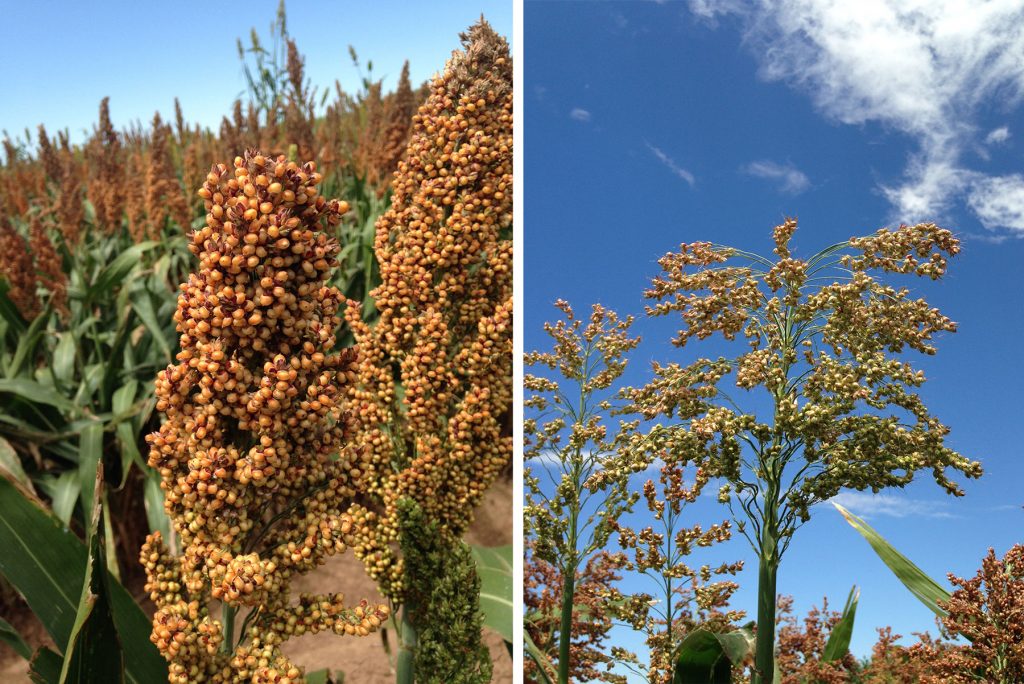
Others Sources for Information on Sorghum Growth and Development


